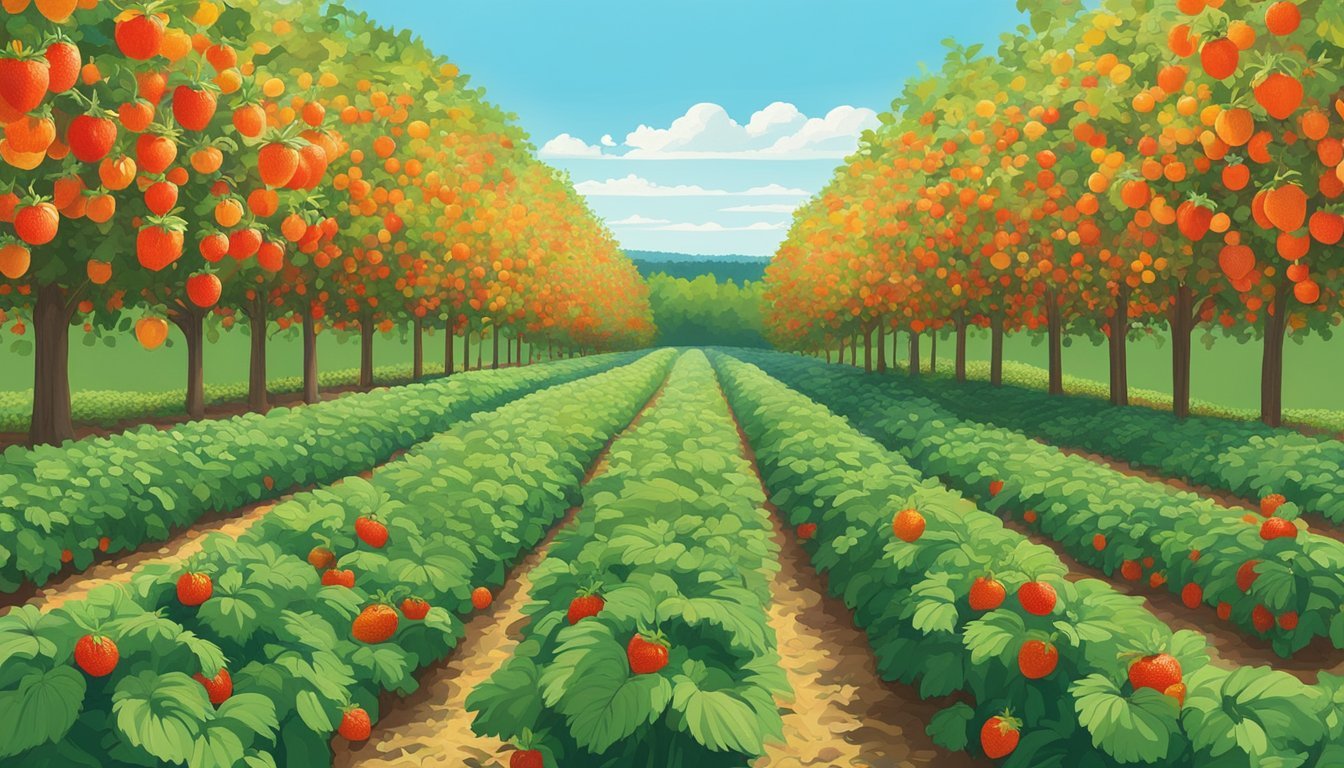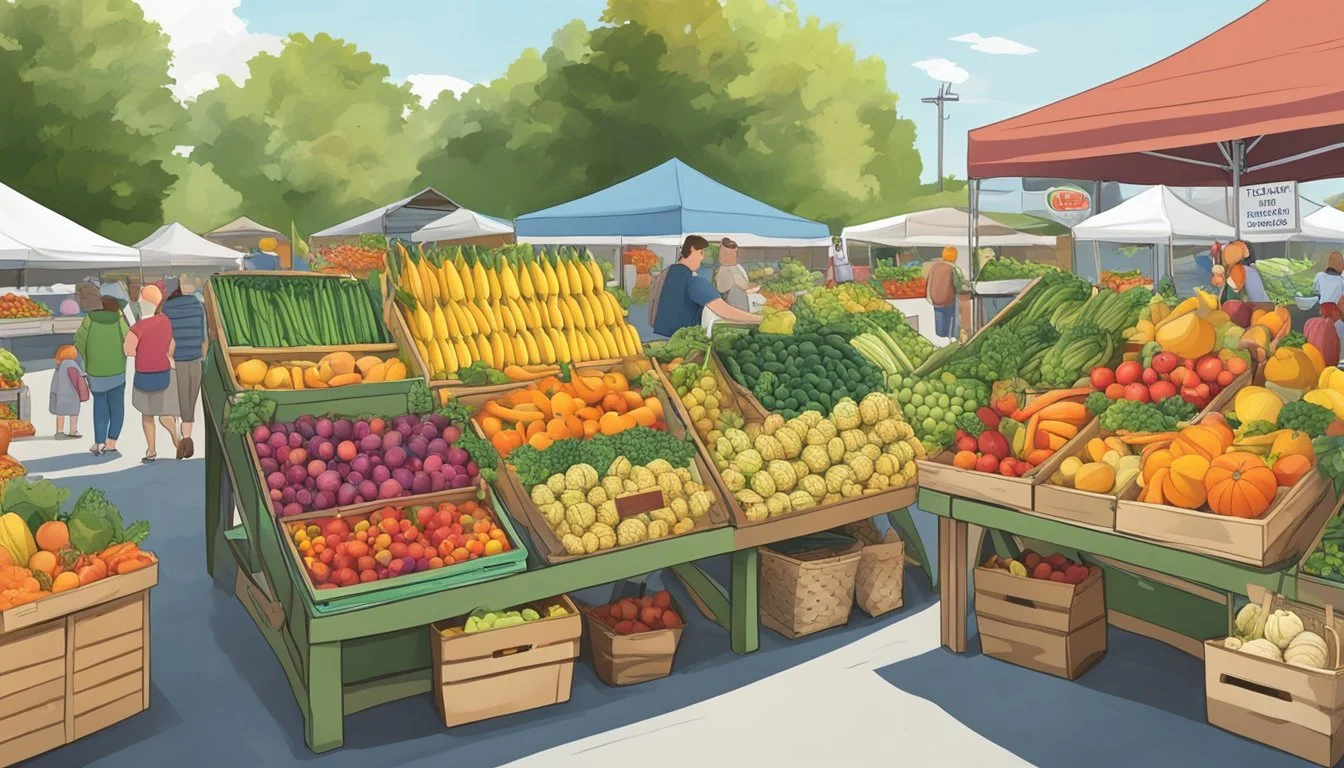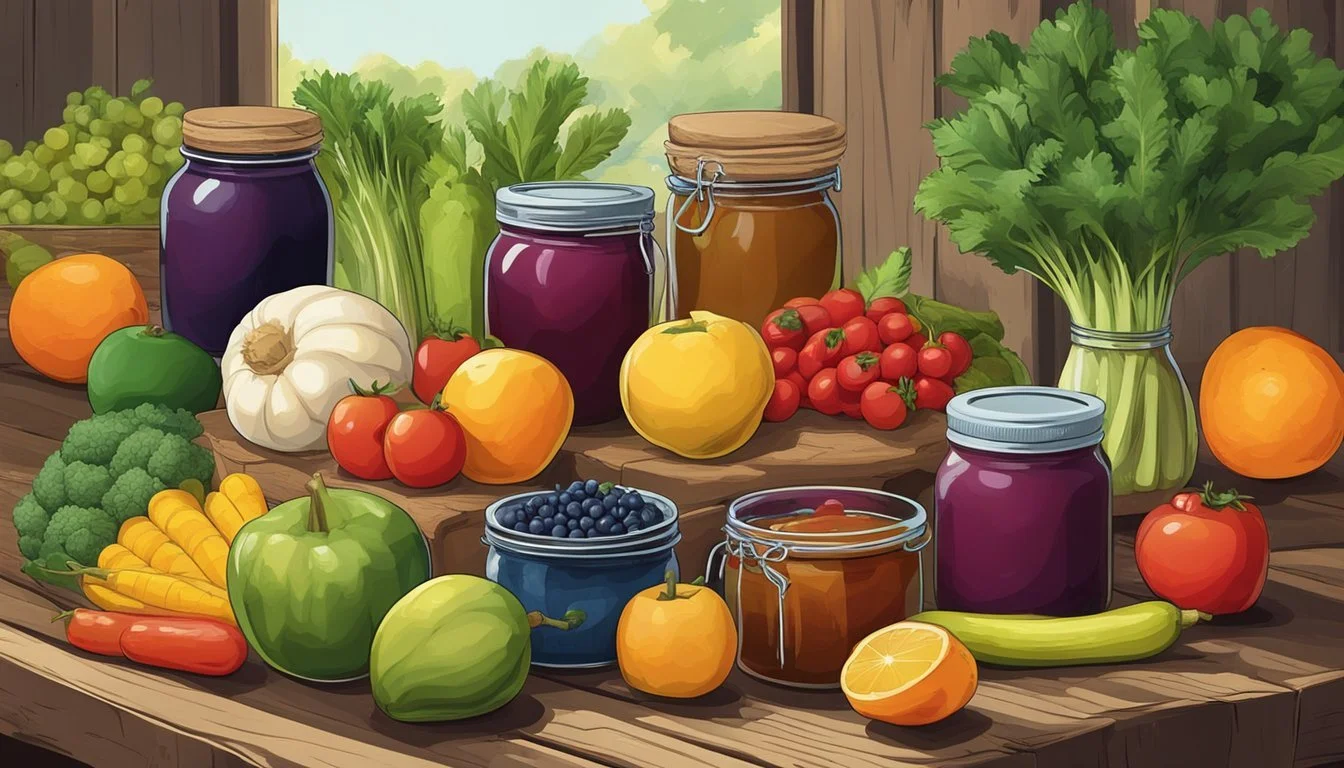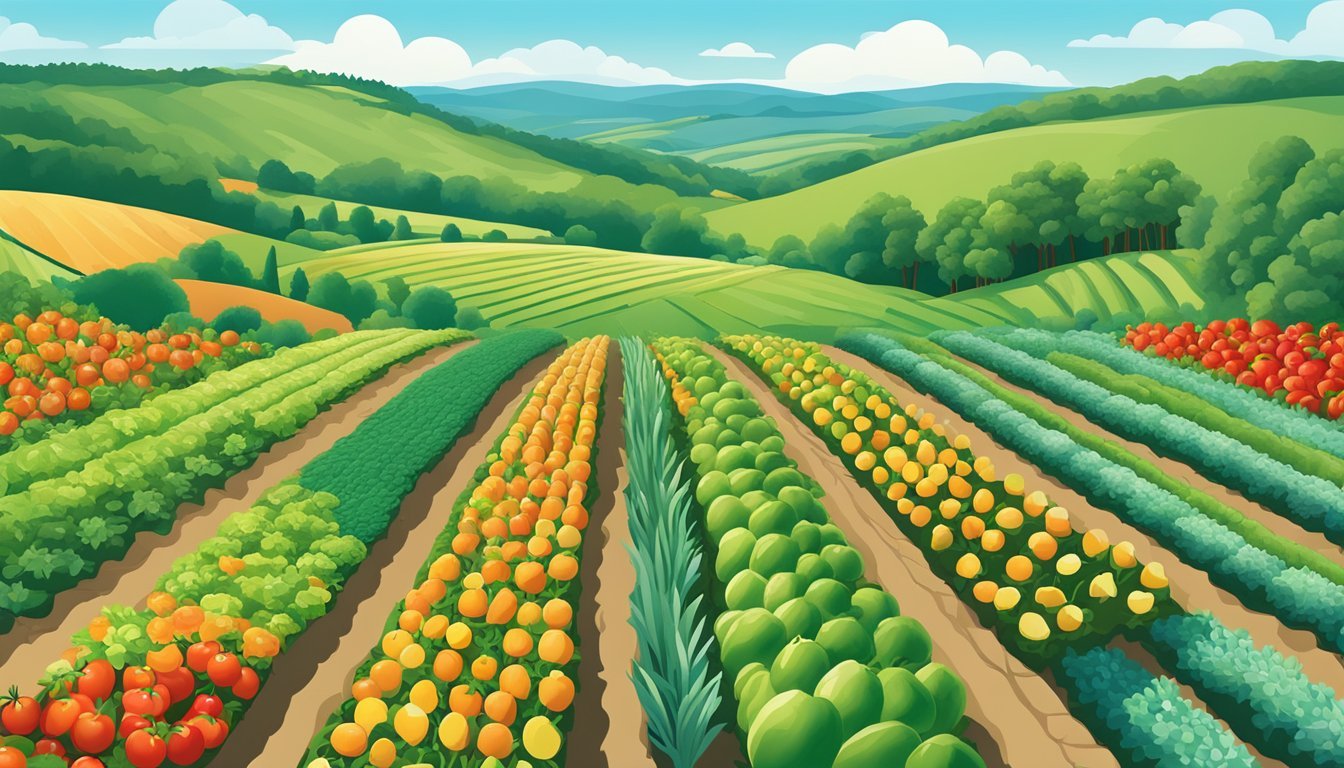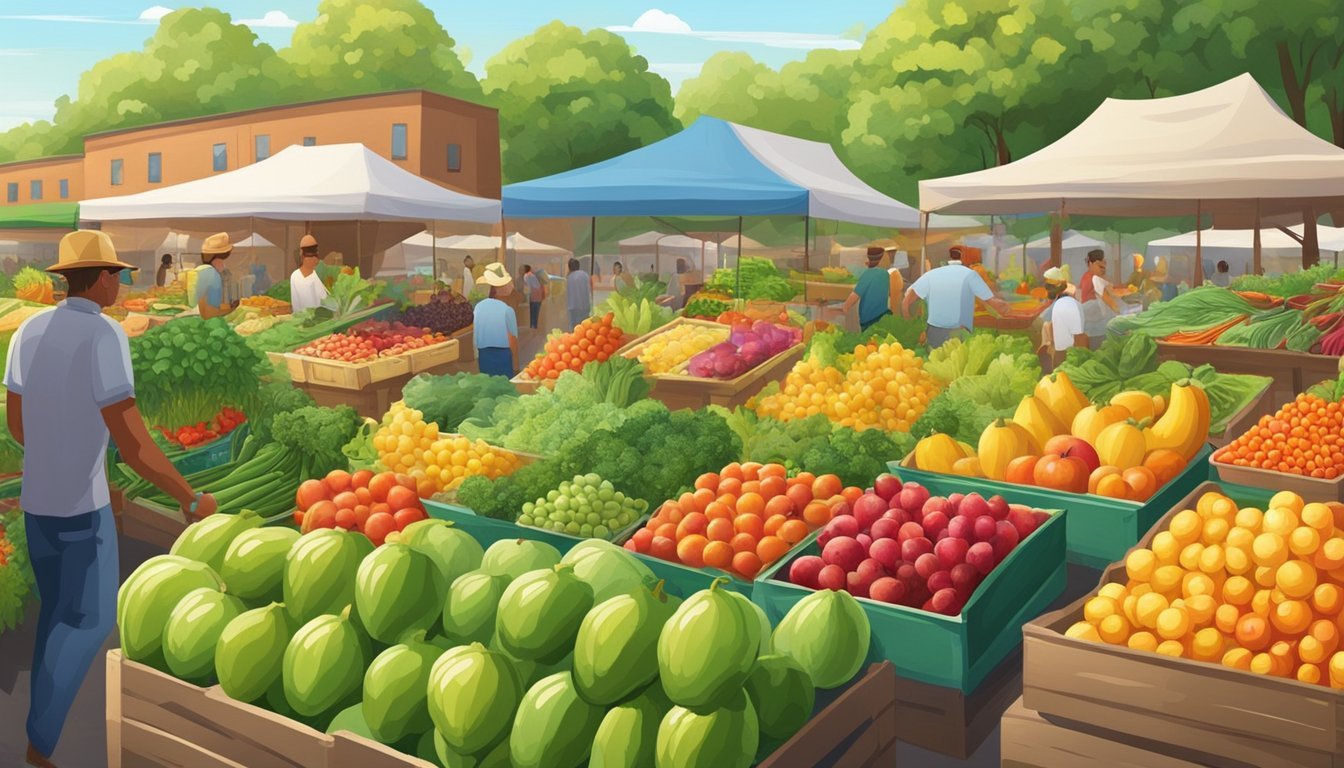New Hampshire Seasonal Fruit & Veg Guide
Your Essential Seasonal Eating Chart
Seasonal eating is deeply embedded in New Hampshire's community ethos, leveraging the cycles of nature to provide fresh, nutrient-rich produce to consumers while supporting the local economy. Eating locally is more than just a culinary preference—it's a commitment to the health of individuals and the environment. As the seasons change in New Hampshire, so do the available fruits and vegetables, each with their own harvesting periods that promise peak freshness and flavor.
The state's varied climate allows for a diverse array of produce to be cultivated throughout the year. From the crisp apples of autumn to the lush berries of summer, New Hampshire's harvest calendar informs shoppers when they can expect farm-to-table goods to be at their best. This knowledge not only enhances the culinary experience but also promotes a sustainable lifestyle by reducing the reliance on imported goods and minimizing the carbon footprint associated with long-distance transportation.
Farmers' markets and local farm stands become social and commercial hubs where the community gathers to support local agriculture. This direct link between producers and consumers bolsters the state's economy by keeping the financial benefits within local boundaries. Furthermore, consumers have the advantage of accessing information about their food directly from the source, offering transparency and building trust in the community's food system.
What’s in Season in New Hampshire Right Now?
Understanding Seasonality in New Hampshire
In New Hampshire, the growing season is dictated by the changing New England climate, leading to a distinct rhythm in local produce availability. From spring's first yields to the hearty crops of autumn, understanding this cycle is key to enjoying fresh, local fruit and vegetables at their peak.
Spring Fresh Produce
During spring, typically starting in April, New Hampshire gardens awaken with early vegetables like asparagus, lettuce, and radishes. Rhubarb also makes its debut, signaling the start of the farm to table season. Markets begin to fill with these fresh options:
April - May: Asparagus, lettuce
June: Radishes, rhubarb
Summer's Bounty
Summer brings an abundance of variety, with July and August being the most prolific months. The warmth of the season supports a wide array of crops such as blueberries, corn, cucumbers (how long do cucumbers last?), tomatoes, and peaches. Pick-your-own fields burst with strawberries and greens, while beans, peppers, and squash reach their peak:
July: Blueberries, strawberries, summer greens
August: Corn, cucumbers, tomatoes, peaches
Autumn Harvest
As the air cools in September and October, gardens transition to hearty vegetables and fruits. Pumpkins and apples are harvested, becoming iconic symbols of the season, often found at farm stands and corn mazes. The autumn harvest includes crops that store well into the colder months:
September: Sweet corn, kale, carrots, eggplant
October: Pumpkins, apples
Winter Availability
The winter months of November and December mark a time for storage crops in New Hampshire. Markets may offer a selection of items kept from the autumn harvest, such as root vegetables and some tree and bush fruits. Perennial crops that are dormant will be anticipated in the following year's growing cycle.
Perennial Fruits and Veggies
New Hampshire's perennial crops, those that grow back each year without replanting, include a selection of fruits and vegetables available in the earlier seasons. Herbs from perennial bushes, along with certain trees producing fruits, are part of the region's agriculture:
Perennials: Various herbs, fruit trees (such as apples)
Sustainable Farming Practices
Sustainable farming practices in New Hampshire are key to ensuring long-term viability of the agriculture sector. These methods focus on preserving the environment, conserving water, maintaining soil health, managing pests responsibly, and using organic strategies to produce food in an eco-friendly manner.
Water Conservation
Farmers in New Hampshire are adopting innovative water conservation techniques to combat drought and reduce reliance on limited water resources. Strategies such as drip irrigation and rainwater harvesting systems allow for efficient water use, ensuring that crops receive precise amounts of water directly to their roots, thereby minimizing wastage and runoff.
Methods Include:
Drip irrigation systems
Rainwater collection
Crop Rotation and Soil Health
Crop rotation plays a pivotal role in sustaining soil health and fertility. By alternating crops on a seasonal basis, New Hampshire farmers replenish essential soil nutrients and prevent the depletion of the land. Additionally, this practice disrupts the lifecycle of pests and diseases, reducing the chances of outbreaks.
Benefits:
Enhances soil nutrients
Disrupts pest life cycles
Integrated Pest Management
Integrated Pest Management (IPM) is a systematic approach aimed at sustainable pest control. It combines biological, cultural, physical, and chemical tools in a way that minimizes economic, health, and environmental risks. Farmers identify and monitor pests and diseases, only applying chemical treatments as a last resort to control pest populations.
IPM Strategies:
Regular pest and disease monitoring
Use of biological pest controls
Targeted chemical applications
Organic Farming Strategies
Organic farming is gaining traction in New Hampshire as an effective means to produce food without synthetic inputs. These strategies adhere to strict guidelines for organic certification, which prohibit the use of synthetic fertilizers and pesticides. By focusing on natural methods like composting, cover cropping, and crop diversity, organic farms promote biodiversity and ecological balance.
Organic Practices:
Composting for soil amendment
Utilizing cover crops for nutrient management
Local Markets and Distribution
The distribution of locally grown produce in New Hampshire plays a critical role in supporting the economy and providing jobs. It ensures the availability of fresh fruits and vegetables at various farm stands, markets, and via CSA programs, which also benefits the community at large.
Farm Stands and Farmers' Markets
Farm stands and farmers' markets are fundamental in connecting consumers with fresh, seasonal produce straight from local growers. New Hampshire boasts numerous farm stands that offer a bounty of fruits and vegetables. These farm stands, such as LaValley Farm in Hookset, contribute to the local economy and become a hub for community interaction.
Farmers' markets operate year-round in New Hampshire, offering not only produce but also products like meats, breads, cheeses, and wines. Locations like the Agriculture in NH Farmer's Market allow consumers to 'shop 'til they drop', supporting local farmers and artisans, thus ensuring a sustainable economic loop within the community.
Community-Supported Agriculture (CSA)
Community-Supported Agriculture programs offer a unique opportunity for consumers to buy seasonal produce directly from local farms. Participants in CSA programs receive a share of freshly harvested produce throughout the farming season, which fosters a direct partnership between farmers and the community. It provides a predictable income stream for farmers and ensures fresh, high-quality food for families.
Wholesale to Retail and Restaurants
The wholesale distribution of New Hampshire's farm produce to retail and restaurant establishments further extends the reach and impact of local farming. By selling in bulk, local farms can supply retail outlets and restaurants, which translates into a more resilient local food economy and broader job creation. Establishments that prioritize locally sourced ingredients support not only the farm-to-table movement but also the health of the community, reflecting their commitment to both economic and sustainable practices.
Seasonal Recipes and Preservation
In New Hampshire, embracing the seasonal bounty means enjoying the peak flavor and nutrients of local produce. Cooking with fresh ingredients, preserving their goodness, and delighting in the variety of the seasons is central to a healthy, sustainable lifestyle.
Cooking With Fresh Produce
New Hampshire's seasonal produce offers a cornucopia of flavors and nutrients, elevating everyday cooking to new heights. Summer is a great time to incorporate plump tomatoes, crisp cucumbers, and sweet corn into recipes. One can create vibrant salads or refreshing salsas that capture the essence of summer with minimal cooking, thus retaining more nutrients.
Tomato Cucumber Salad:
2 cups diced fresh tomatoes
1 cup sliced cucumbers
2 tbsp olive oil
1 tbsp balsamic vinegar
Salt and pepper to taste
In autumn, squash varieties and root vegetables take the stage, ideal for hearty soups and casseroles. These dishes not only offer comfort but also pack a nutritional punch as the produce is fresh from the harvest.
Butternut Squash (how long does butternut squash last?) Soup:
4 cups cubed butternut squash
1 diced onion
3 cups vegetable broth
1 tsp thyme
Salt and pepper to taste
Canning and Freezing for Winter
Preservation of vegetables and fruits through canning and freezing ensures that even in the depths of winter, one can enjoy the taste of summer and autumn. Canning tomatoes, pickling cucumbers, and creating jellies from summer fruit keeps the pantry stocked with healthful options that are free of preservatives and additives found in commercial products.
Canned Tomatoes:
Boil whole tomatoes for a minute and then plunge them into ice water.
Peel the skins, remove stems and cores, and pack into jars covered with hot tomato juice, leaving 1/2-inch headspace.
When canning, it's critical to follow safe canning practices to prevent food-borne illnesses. Detailed guidelines offered by the National Center for Home Food Preservation are a reliable resource.
Freezing offers a quicker preservation method, especially for fruits like berries and peaches. Simply wash, dry, and spread on a baking sheet to freeze individually before transferring to freezer bags, conserving their flavor and nutrients for months.
Making the Most of Summer Fruit
The abundance of fruit in New Hampshire's summer months calls for creative cooking and preservation methods. Fresh berries, peaches, and melon are not only perfect for eating raw but also for incorporating into desserts and drinks.
Berry Compote:
2 cups mixed berries (strawberries, blueberries, raspberries)
1/4 cup sugar
1 tsp lemon juice
Simmer the ingredients until syrupy, then cool and use as a topping for ice cream, pancakes, or yogurt.
Preservation doesn't have to mean just canning or freezing. Making fruit preserves or dehydrating slices for healthy snacks are excellent ways to extend the lifespan of these foods while maintaining taste and nutritional value. They allow one to enjoy local, healthful fruits year-round in various enjoyable recipes.
Agritourism in New Hampshire
Agritourism in New Hampshire offers a diverse array of experiences that cater to tourists, bolster the economy, provide educational opportunities, and enhance the sense of community. From farm-to-table events to seasonal celebrations, visitors can engage deeply with the local agricultural lifestyle.
Farm to Table Events
New Hampshire's agritourism thrives on events that bring fresh, local produce directly to consumers. They can immerse themselves in the local culture by attending farm-to-fork occasions where seasonal dishes showcase the best of the state's harvest. Special events often feature locally made cider and initiate guests into the world of hard cider production, a growing facet in the local economy.
Visiting Local Farms
Tourists are encouraged to visit local farms, such as those around Lee, where they can witness the workings of a real farm. They have the opportunity to roam through the fields, pick fresh berries, and purchase goods straight from the source at farm stands. These visits not only support the local farms' staff and families but also allow for personal connections between producers and consumers.
Educational Programs and Tours
Education is a core component of New Hampshire's agritourism. Many farms offer guided tours and programs that explain the processes of food production, sustainable farming practices, and the environmental impact of agriculture. These educational tours aim to inform both locals and visitors, fostering a well-informed community.
Autumn Activities
Autumn in New Hampshire is a season brimming with activities. Visitors can navigate through corn mazes, indulge in tasting events that include fresh apple cider, and partake in harvest festivals. These activities not only provide entertainment but also educate the public on the significance of seasonal cycles in farming.
Connecting With New Hampshire's Farming Community
In New Hampshire, the farming community is strengthened through various platforms and events that promote collaboration and support. These initiatives serve as vital conduits for knowledge-sharing, economic growth, and the reinforcement of a community-focused ethos among local agriculturalists.
Social Media Outreach
Farmers in New Hampshire utilize social media platforms such as Facebook, Twitter, and Pinterest to connect, share experiences, and support each other. These networks provide an essential space for:
Announcements: Timely updates on farming practices and upcoming gatherings.
Community Support: A forum for sharing advice, resources, and moral support during challenging times.
By tapping into hashtags like #FarmingTogether, agriculturalists leverage the collective strength of their community to enhance their social media outreach and networking potential.
Agricultural Fairs and Festivals
The state showcases its agricultural prowess through fairs and festivals that not only serve as celebration points but also as crucial networking hubs. The events promote local economy and jobs by featuring:
Local Produce: Highlighting seasonal fruits and vegetables grown in New Hampshire.
Educational Workshops: Providing knowledge transfer and skill enhancement for both seasoned and beginner farmers.
Participation in these fairs links farmers with consumers and peers, fostering a strong sense of community.
Supporting Local Agriculture
Support for local agriculture is instrumental in the state's economy and in preserving New Hampshire's farming heritage. The community shows support through:
Farm to Table Initiatives: Encouraging the consumption of locally grown produce.
Direct Sales: Engaging with local farmers' markets and farm stands for fresh, seasonal goods.
By prioritizing local products, residents create a resilient economic foundation that champions the symbiotic relationship between farmer and consumer.
Tips for Home Gardeners
Navigating the seasonal shifts in New Hampshire can be challenging for home gardeners. Expertise in starting a garden, managing pests, and extending the growing season are essential for a bountiful harvest.
Starting Your Own Garden
When one decides to start a garden in New Hampshire, it's crucial to select the right time and the appropriate crops that thrive in the local climate. Vegetables like beans, tomatoes, and carrots are suitable choices. A gardener should also focus on sustainable practices, which include composting to enrich the soil and conserving water. Planting herbs among vegetables can promote garden health, as some herbs naturally deter pests.
Ideal Planting Times:
Beans: After last frost, May to June
Tomatoes: Indoor start in March, transplant after last frost
Carrots: Early spring, as soon as the soil can be worked
Sustainability Tips:
Composting: Utilize kitchen scraps and garden waste.
Water Conservation: Collect rainwater and use drip irrigation.
Pest Control and Prevention
Efficient pest control maintains the health of the garden without compromising the environment or the produce's quality. They can implement natural deterrents or barriers, such as row covers, to protect vegetables from common pests. One should be vigilant in monitoring for signs of pest infestations or plant diseases, as early detection is key to prevention.
Natural Deterrents:
Marigolds: Repel various insects
Garlic Spray: Natural pest repellent
Physical Barriers:
Row Covers: Shield crops from insects and small animals
Fence: To prevent larger animals from accessing the garden
Extending the Growing Season
To maximize the harvest period, gardeners can utilize greenhouses or cold frames to protect plants from the early frost and cool temperatures. By doing so, the growing season can start earlier and end later, giving a longer period to grow and harvest crops like spinach and kale that can tolerate cooler conditions.
Season Extension Structures:
Greenhouse: Ideal for starting seedlings early and protecting sensitive plants.
Cold Frames: Allows for the cultivation of cool-season crops through fall and into winter.
Employing these strategies will help ensure a successful and sustainable harvest, contributing to the gardener's health and well-being.


